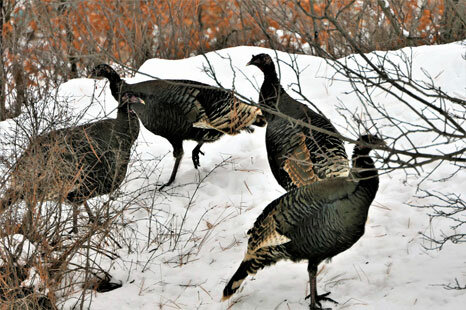
Photo courtesy Charles Martinez
This week’s Bird of the Week, compliments of the Weminuche Audubon Society and Audubon Rockies, is the wild turkey.
Due to its association with the Thanksgiving holiday, the wild turkey is one of the most recognizable birds in North America. Its likeness adorns greeting cards, decorations and school art projects. This familiar bird possesses physical features with unusual names that beg a closer look.
Turkeys have the ability to rapidly change the color of head features between red, white and blue depending on excitability and breeding status. Warty bumps on the head and neck, more pronounced in males, are called caruncles. The bright skin hanging from the turkey’s neck is the wattle. During breeding season, a bright red wattle signals male fitness to hens looking to mate. If the turkey is threatened, blood drains from the wattle, turning it a bright blue color. In both sexes, the bare skin of the wattle acts to dissipate heat in hot weather.
Another feature more pronounced in males is a fleshy, blood-filled appendage hanging down over the beak called the snood. To a hen, a long, red, male snood signals a strong healthy mate. Although both sexes can form a bundle of feathers called the beard which hangs from the chest, this also is more common in males and gets longer with age.
Despite fossil records documenting the presence of wild turkeys in North America for millions of years and native peoples both revering and domesticating them, loss of food and habitat from deforestation and market hunting during the 19th and early 20th centuries were causing widespread disappearances of wild turkey populations.
Starting in the 1940s, a program of capturing and relocating wild turkeys in the United States began to reverse this trend. In 1973, the National Wild Turkey Federation, with a mission to conserve turkeys and habitats, was formed. In New England states where the wild turkey was nearly non-existent 50 years ago, populations have exploded.
Rural birds are becoming almost too comfortable in suburban yards with a source of food in gardens and under bird feeders.
For information on events, visit www.weminucheaudubon.org and www.facebook.com/weminucheaudubon/.